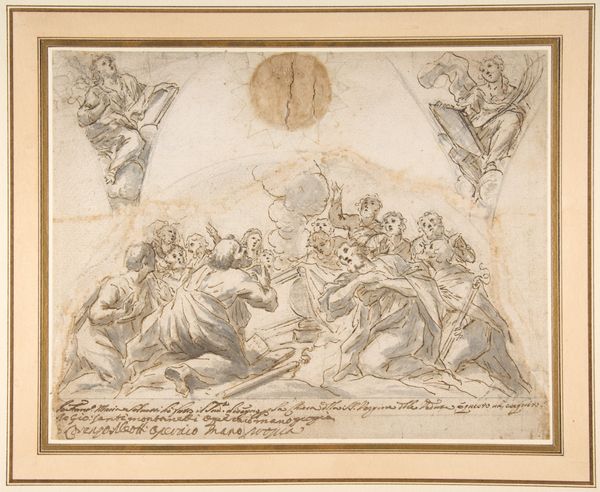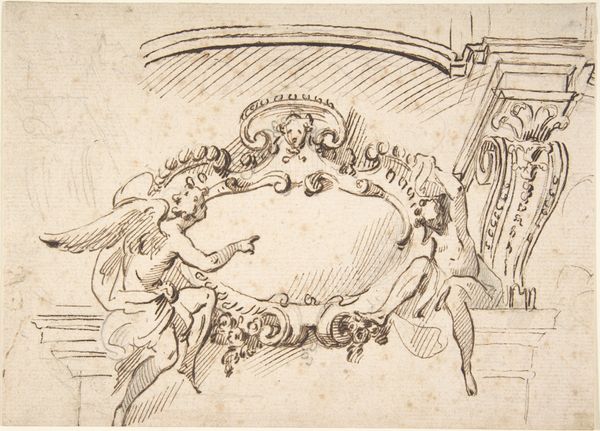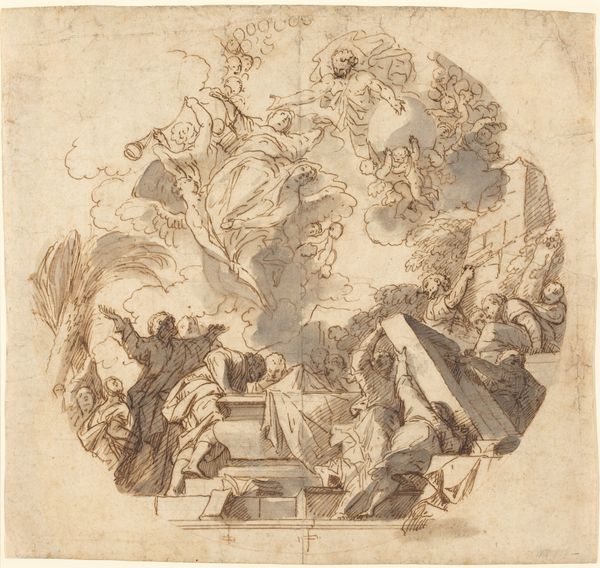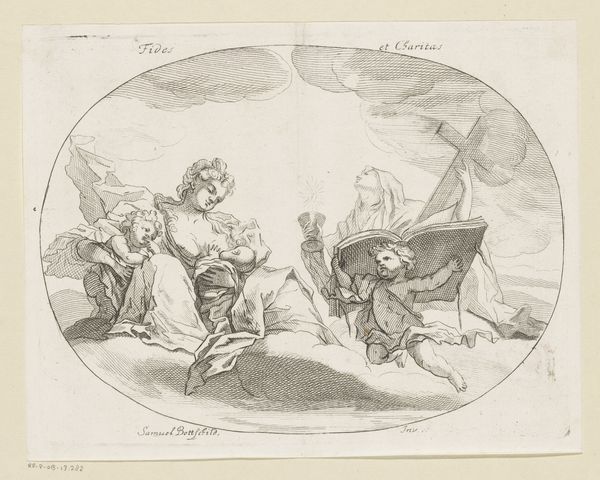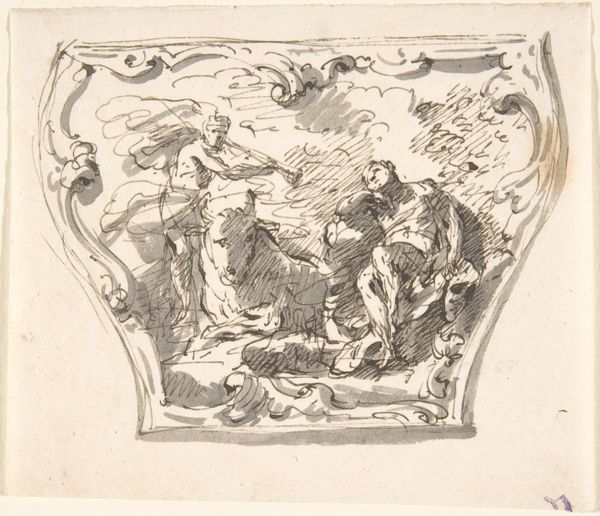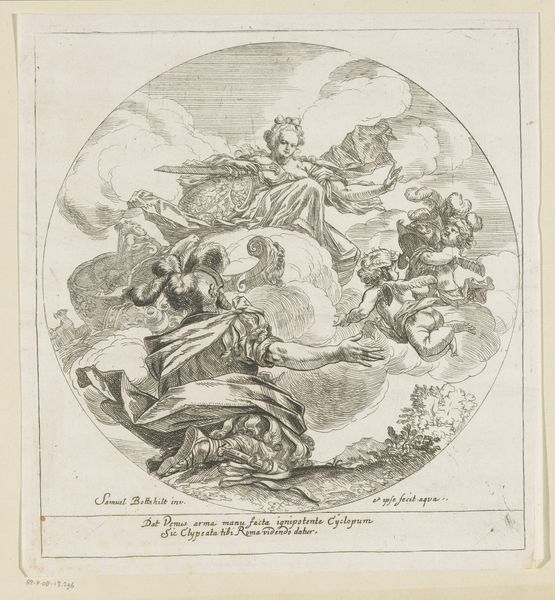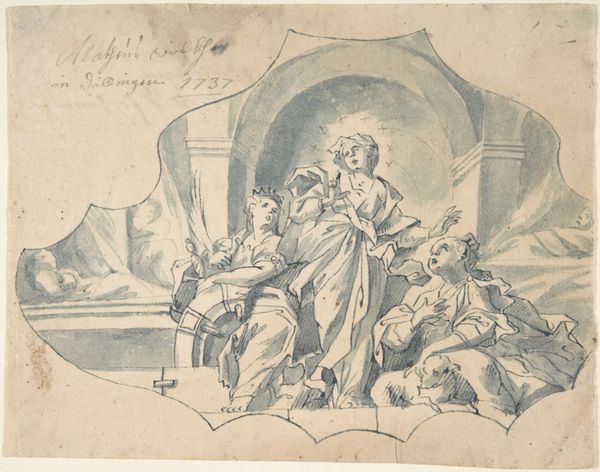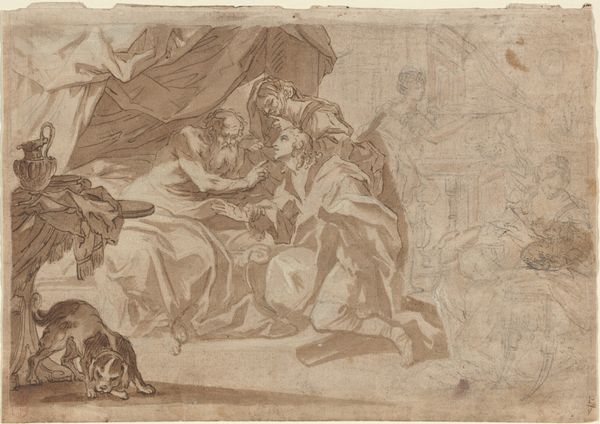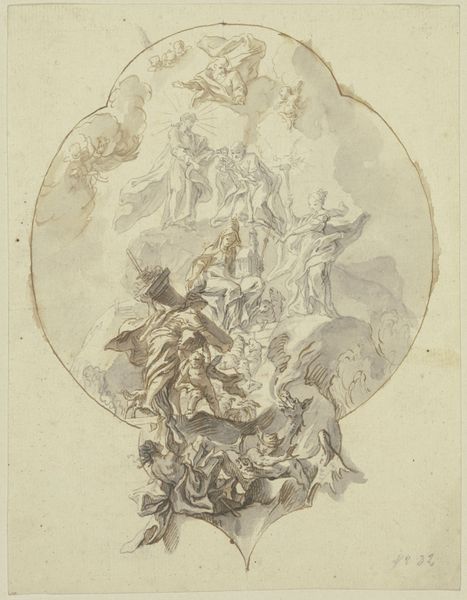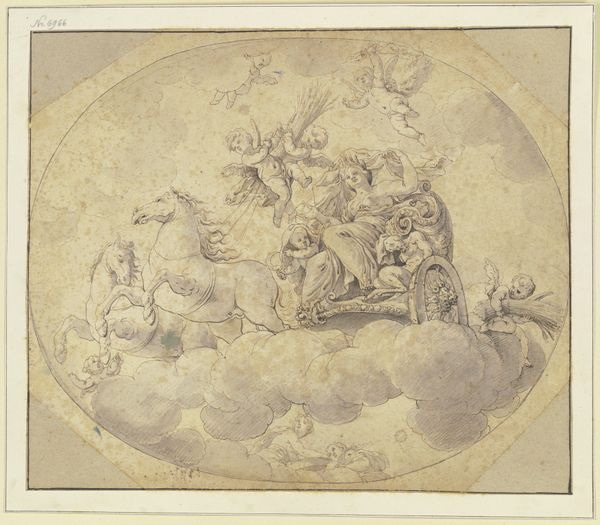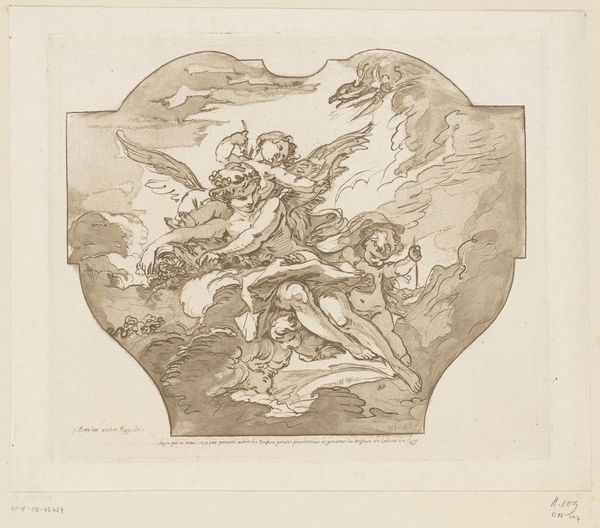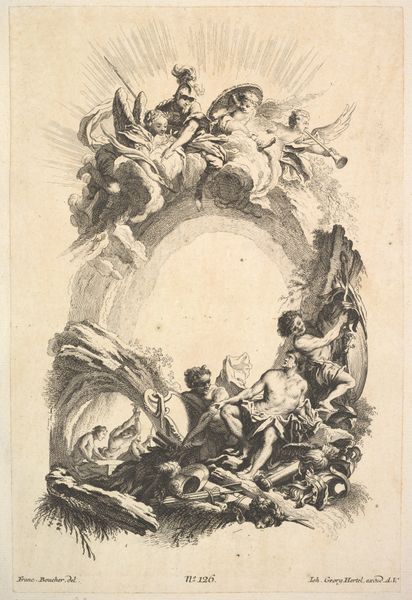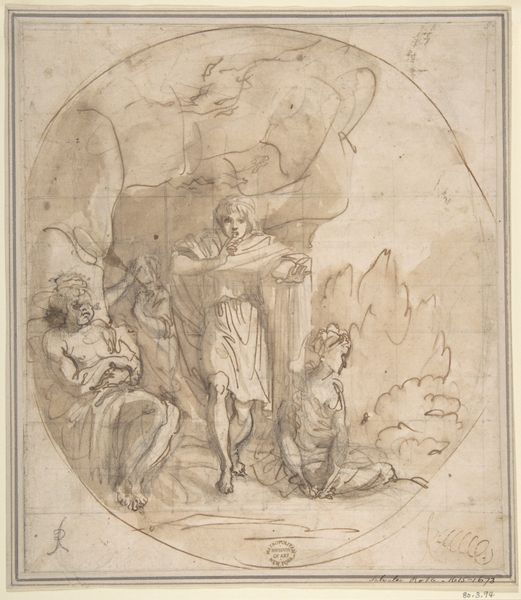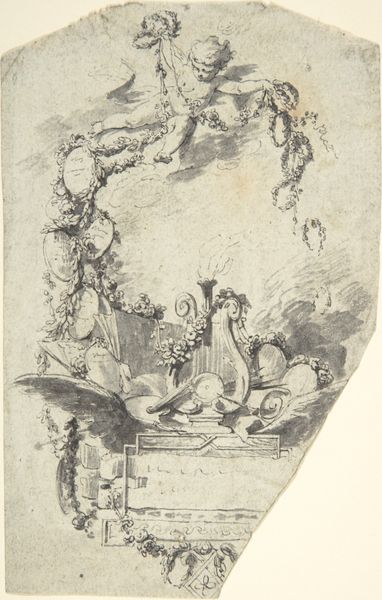
drawing, print
#
portrait
#
drawing
#
baroque
# print
#
figuration
#
pencil drawing
#
history-painting
#
academic-art
Dimensions: sheet: 5 1/4 x 6 1/2 in. (13.3 x 16.5 cm)
Copyright: Public Domain
Curator: What strikes me immediately about this drawing, Alexander the Great and King Poros, attributed to Martin Altomonte, is the sheer lightness of it, the way the wash and pencil give it a feeling of almost ethereal drama. Editor: I find the materials interesting—a drawing, but functioning as a print—blurring those high art/low art distinctions. The composition itself emphasizes hierarchy; Alexander standing, active, and Poros reclining, passive, almost limp. How does that contrast play into our reading of it today? Curator: Exactly! Consider the historical context. The power dynamic is undeniable, especially examining the orientalist tropes present in depictions of defeated kings. But what interests me is the portrayal of Poros. Is Altomonte sympathetic, attempting to capture the king's dignity in defeat, or reinforcing colonial narratives? Editor: I think you can't disentangle the economics of printmaking from this. Prints enabled wider distribution. So, the visual language serves a purpose: to reaffirm certain social hierarchies while simultaneously allowing broader participation, via consumption of that imagery, regardless of class. Note how the staging and drapery feel luxurious; who was consuming such images, and what material desires were they meant to spark? Curator: The scale of production matters profoundly. Altomonte wasn’t just making art; he was contributing to the visualization of power, reinforcing ideas about empire and conquest for a consuming public. It makes you wonder about who gets to write and, more importantly, draw history. What biases are embedded in the very act of creating and distributing these images? Editor: And even in the stylistic choices. It's academic art—Baroque classicism meets idealized figures. Consider where Altomonte received his training, the expectations of patrons—this is manufactured taste, essentially. It's crucial to understand how these tastes were shaped by systems of power. Curator: I find myself continually drawn to that interplay between the grand historical narrative and the quieter intimacies within the composition, like the ambiguous gestures and expressions on each figure. It suggests there is always room for more to be investigated. Editor: Precisely. Thinking about the image as a product helps to unveil some of these buried complexities, forcing us to confront who benefitted and how they reinforced the ideas and labor through accessible art forms like this print.
Comments
No comments
Be the first to comment and join the conversation on the ultimate creative platform.
